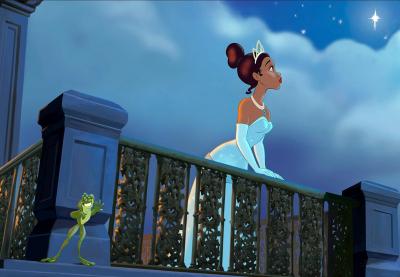Walking through Macy’s, I never expected to have a personally significant moment.
I was home from college, walking with my mom through the beauty section, when my eyes stopped on a shampoo bottle with Princess Tiana on the label. It might sound strange to hear that a grown woman was excited about Disney hair products. But as I showed my mom the bottle, I realized why I was so happy: That shampoo bottle symbolized 19 years of waiting to see a princess who looked like me.
When looking for a Disney princess to claim as a child, I settled first on Jasmine because she had brown skin like me. (Never mind the fact that she was Arab, and I am African American.) Then I picked Pocahontas. (She was a closer connection because of my microscopic Native American heritage.) But even though these princesses had skin tones similar to mine, I wanted someone who was African American like me.
Just as I looked for myself in a Disney princess, our students are searching for themselves in the stories they read and hear as well. If you are active on social media, you have probably seen the hashtag #RepresentationMatters. This hashtag sums up the idea that children need “mirrors”—they need to see themselves reflected in the books they read, the teachers they learn from and the images they see.
But what kinds of mirrors? Skin-color representation is important, but it is only one form of representation. It is crucial that we as educators choose literature that reflects not only a range of appearances but also a range of cultures.
Dr. Sharroky Hollie, executive director of the Center for Culturally Responsive Teaching and Learning, encourages educators to be on the lookout for stories with “brown washed” characters. These stories are created when an author takes a character such as Cinderella and gives her brown skin without changing anything else about her. The result is a “culturally generic” text, one featuring a protagonist whose culture plays no meaningful role in her life.
In place of books like these, Hollie recommends that teachers intentionally choose “culturally authentic” texts, in which the characters’ cultures influence their identities. To help teachers determine whether a book is “culturally authentic,” Hollie outlines a Bechdel test of sorts in his book Strategies for Culturally and Linguistically Responsive Teaching and Learning. Some of the questions he encourages educators to ask of the text include:
- Are diverse characters represented in the text?
- Are the characters more than secondary or background characters?
- Are accurate descriptions and examples of the character’s culture portrayed in the text beyond a surface level?
Reading Diversity, Teaching Tolerance’s text-selection tool, promotes a multi-dimensional approach to text selection that prioritizes critical literacy, cultural responsiveness and complexity. Try it here!
I’ve always understood the importance of representation, but I must admit that I, too, once thought skin-color representation was enough. Now I realize that it is important, but it is just the first step—I should have been actively incorporating culturally authentic texts in my classroom as well.
In my role as a teacher on special assignment, I provide trainings on culturally responsive teaching practices. An important part of this work is encouraging teachers to seek out books that present culturally authentic characters and situations.
If you are looking to expand your classroom library to include more culturally authentic representation, We Need Diverse Books and Responsive Reads both offer book lists and resources. The free, printable texts in the Learning for Justice Student Text Library also include nearly 100 stories, poems and excerpts searchable by grade level and accompanied by text-dependent questions.
It’s our responsibility to speak to our students’ home lives and cultures by teaching texts that authentically represent them. We know the feeling we get when we meet people who have some of our history, people who grew up in our hometowns or went to our schools. It feels like meeting an old friend. Let’s give our students that same sense of knowing and belonging by incorporating culturally diverse and authentic texts into our classrooms.
Princess Tiana, though fictional, was that kind of friend to me. For the most part, she answered all three of Hollie’s questions with “yes.” As educators, we can actively work every day to make sure our students won’t have to wait until they’re in college to find characters they connect with. How will you ensure culturally diverse and authentic representation in your classroom this year?
Davis is a teacher on special assignment for Lakota Local Schools in Ohio.
